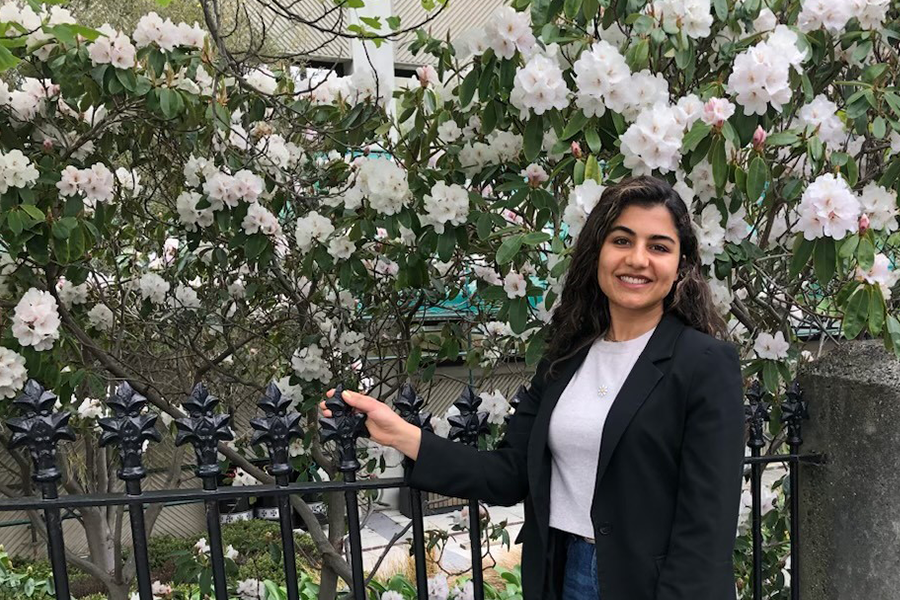
PhD candidate Zara Rahmani switched from researching in-person wellness retreats to online wellness retreats when the COVID-19 pandemic hit.
Would you attend a virtual wellness retreat?
You could find yourself eating healthy food, and engaging in daily yoga, meditation or journaling practises while chatting with other attendees about your experiences, but you’ll be doing it all online from the comfort of your lounge.
Zara Rahmani, a PhD candidate in the Department of Tourism, was originally planning on attending several wellness retreats in person to assess what kind of impact they had on people’s well-being for her research. However, when the COVID-19 pandemic hit, her plans went out the window.
“I couldn’t travel to do my fieldwork because it was not safe, but also not possible, because many of these retreats shut down their businesses.”
After practical observations and critical reflections on her research subject, Rahmani decided to shift the focus to the virtual practice of wellness retreats.
Initially, she resisted this idea:
“Adapting to the new reality, I was like ‘who wants to do it online?’ If people want to do a retreat, they want to get away from home and they want to get away from technology.”
To be able to fully understand virtual wellness retreat experiences, she participated in a few programmes.
Around this time, Rahmani, searched online for ‘online wellness retreat’ and not many results appeared.
“I chose ‘virtual wellness retreat’ as an umbrella term, but it can be online retreat, virtual retreat, online wellness retreat…”
Rahmani refers to them as being virtual because they feature real-time communications.
Unlike an online yoga class during which people take the class at their own pace and ‘one-way’ receive instructions from the teacher, a virtual retreat is a ‘two-way’ interactive experience, she says. Some of the retreat’s activities might be done offline, but most are done online and collaboratively.
“This programme provides some mutual interactions where the participants are not just passive listeners, they actively co-create the experience, which makes the experience more engaging”
Someone who attends a virtual wellness retreat would be looking to take part in some activities which will improve their wellbeing, such as fasting, journaling, yoga, dance or meditation.
Attendees may receive a menu for a healthy diet to follow, and there may be a few content sharing platforms, chat groups, and live opportunities for them to share how they are doing on the programme.
A key purpose of attending a retreat is to learn some new skills to help a person develop a few healthy habits in their life.
“When people go to a retreat in-person, they get back from the retreat and their life is the same, making it hard for them to apply those habits in their daily life.”
“When they do it at home, and start to build the habit at home, it’s easier to keep them and make them long lasting.”
Rahmani says in-person wellness retreats are a luxury product, most often attracting wealthy travellers, mainly females ‘moving into an empty nest stage’.
“They’re at a stage of life where they’re not dealing with young kids.”
Online wellness retreats, on the other hand, are attracting a much younger share of the market.
One of the benefits of a virtual wellness retreat is people don’t have to take a specific amount of time off from everyday life and work to attend, she says
“We had lots of young mothers who attended these, because it’s more affordable and more accessible.”
Now, when Rahmani searches online for virtual wellness retreat, thousands of options appear.
“It’s getting more popular because of the unique benefits people are receiving to improve their overall well-being.”
-Korero by internal communications adviser, Koren Allpress